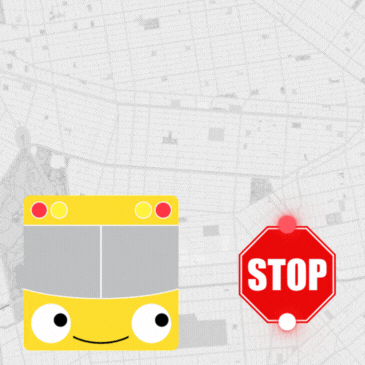Today I attended a tragic funeral. All funerals are tragic, but some appear worse than others. Especially when a beautiful man, 61 years old, is killed by a drunken driver, leaving a grieving wife, ten children and countless relatives and friends traumatized.
Every tragic death reminds us (or should remind us) of all other senseless losses – and unbearable pain – beknownst or unbeknownst to us. How many broken hearts are crying around the world at this very moment? How do we respond to the millions of tears shed and the piercing screams echoing through the corridors of history?
The timeless question – why? why do terrible things happen to good people? – resurfaces its naked head in these timely moments of agony.
SUFFERING: THE ULTIMATE MYSTERY
When I Wanted You Did Not – By Simon Jacobson
Today I attended a tragic funeral. All funerals are tragic, but some appear worse than others. Especially when a beautiful man, 61 years old, is killed by a drunken driver, leaving a grieving wife, ten children and countless relatives and friends traumatized.
Every tragic death reminds us (or should remind us) of all other senseless losses – and unbearable pain – beknownst or unbeknownst to us. How many broken hearts are crying around the world at this very moment? How do we respond to the millions of tears shed and the piercing screams echoing through the corridors of history?
The timeless question – why? why do terrible things happen to good people? – resurfaces its naked head in these timely moments of agony.
The death of an individual evokes the memory of all deaths from the beginning of time.
In difficult times like these, we have no one where to turn but to the eternal strength we glean from those that faced the abyss before us.
None other than the great Moses confronts G-d with this greatest of challenges in this week’s Torah portion. Actually, the story begins earlier when Moses first “meets” G-d at the burning bush.
In perhaps the most dramatic episode in the entire Torah, this week’s portion recounts the intimate dialogue between Moses and G-d, as Moses implores that the Almighty forgive the Jewish people for their terrible sin of building and worshipping the Golden Calf. (See The Face of G-d for a more elaborate discussion on the topic).
As Moses attempts to elicit the Divine compassion, he asks G-d “I beg you, please show me Your Glory.” G-d rejects Moses with the memorable words: “You cannot see My face, for no man shall see Me and live” (Exodus 33:18;20).
A strange Talmud explains that G-d rejected Moses’ request because of an earlier event. When G-d appeared to Moses at the burning bush, Moses refused to look, as it says, “And Moses hid his face, for he feared to look upon G-d” (Exodus 3:6). “Now that you want to see My Face,” G-d said, “I am not willing to show it to you.” “When I wanted you didn’t want; now when you want, I don’t want.” (Berachot 7a).
The Midrash elaborates: “Moses did not act accordingly by hiding his face. Had he not hidden his face G-d would have revealed to Moses what is above and what is below, what was and what will be in the future. Finally, when Moses did request to see the Divine face, G-d informed him that ‘no man shall see me and live.’ When I wanted, you didn’t want, and now that you want, I don’t want” (Shemot Rabba 3:1. 45:5).
What is the meaning behind G-d’s bizarre reaction? It’s impossible to say that G-d was being “petty” and angrily getting even with Moses?! Either Moses deserved to see the Divine face or he doesn’t deserve to see it? Why would it be dependent on Moses’ not wanting to see G-d’s face at the burning bush?
Indeed, a second opinion in the Talmud and Midrash holds that Moses was honoring G-d by not looking at His face, and he was subsequently rewarded for his respect.
Additionally, the verse de facto suggests that Moses could not see G-d’s face because of an objective reason – “no man can see the Divine face and live.” The Talmud is implying that had Moses chosen to look at G-d’s face in the burning bush he now would be able to see the Divine Face and live.
And finally, why indeed did Moses not want to look at G-d’s face in the burning bush? And now he suddenly developed a craving to do so?
Clearly, the burning bush and G-d’s face in the bush is a major event, which requires deeper examination.
Let’s read the verse closely: “G-d’s angel appeared to in the heart of a fire, in the middle of a thorn-bush. As he looked, realized that the bush was burning, but was not being consumed. Moses said , ‘I must go over there and investigate this great phenomenon. Why doesn’t the bush burn?’ When G-d saw that was going to investigate, He called to him from the middle of the bush. ‘Moses, Moses!’ He said. ‘Yes,’ replied . ‘Do not come any closer,’ said [G-d]. ‘Take your shoes off your feet. The place upon which you are standing is holy ground… Moses hid his face, since he was afraid to look at the Divine. G-d said, ‘I have indeed seen the suffering of My people in Egypt. I have heard how they cry out because of what their slave-drivers , and I am aware of their pain. I have come down to rescue them from Egypt’s power. I will bring them out of that land, to a good, spacious land, to a land flowing with milk and honey” (Exodus 3:2-8).
G-d’s words from within the burning bush – “I have indeed seen the suffering of My people…I have heard how they cry out” – explains why G-d appeared, of all places, in a burning thorn-bush. Had G-d appeared in, say, a handsome fruit tree, Moses would have challenged G-d and asked: “It’s very nice that you appear in beauty, but do you also feel our human pain?! You want me to challenge the depraved Pharaoh and insist that he stop the genocide and release the enslaved Jews. But everyone will ask ‘where is G-d in all our suffering. Maybe G-d exists only in good times but not in bad ones’. Perhaps you don’t have the power to confront evil’.”
To pre-empt these fundamental questions, G-d appeared in the lowly thorn-bush in order to demonstrate that “I am with you in your pain and suffering” (see Rashi. Tanchuma 14), and that there is no place devoid of the Divine (Mechilta. Shemot Rabba 1:9. Torat Shlomo on the verse).
And now, G-d wanted to show Moses the deeper mystery of good and evil, life and death – “what is above and what is below, what was and what will be.”
But Moses did not want to see G-d’s face in the Holocaust. He did not want to “understand” G-d’s “reasoning” for allowing the death of millions of innocent children. He wasn’t willing to face the ultimate paradox and “hear” Divine explanations for human suffering. “He feared to look upon G-d” when he saw the lives being consumed by the burning bush, even as the bush itself was not being consumed. Moses “hid his face” and just wanted to cry.
But then time passed and things changed. G-d lived up to His promise and delivered the Jews from the clutches of their Egyptian tormentors. G-d demonstrated that He indeed was with together with the people in their suffering, and finally redeemed them through His chosen leader, Moses.
Things seemed to be going very well. Following the Exodus, Moses led the Jewish nation to Sinai, where they experienced the greatest revelation in history: The giving of the Divine mandate to the human race. But then the tide turned again. While Moses was relishing in the Divine delights atop Sinai, the people below built and worshipped the Golden Calf. This time the catastrophe did not come at the hands of the Egyptians, but by fault of the Jews themselves.
Moses, descending from the mountain, realized the high stakes: How can he elicit G-d’s compassion in the face of such a grave crime? How can he offer the flawed human being hope after a great fall? Moses knew that now he needed to return to the “burning bush,” the place where good and evil meet, where joy and suffering converge – the place where the Divine can be found in the darkest corners of existence. He understood that only this impenetrable place contained the answer to solve the ultimate paradox: How to repent from sin; how to heal from wounds – how the “bush can burn and not be consumed” – the power of Teshuvah. [By breaking the tablets Moses also demonstrated how the break itself becomes part of the Divine healing process – see The Roots of Trauma].
Moses marched back up the mountain to confront G-d. Moses had matured to a point where he was now ready to see G-d’s face. He now appreciated the need to enter into the inner sanctum, into the Divine mystery of human suffering, and wanted to “see” the Divine face in order to elicit the strength necessary to endure distress for generations to come.
Moses’ new level of awareness was made possible also by the fact that in the interim Moses had another experience on Sinai that empowered him with the ability to face death – an episode related to an additional, special chapter we read this Shabbat Parah. The Midrash explains that when G-d was teaching Moses the methods of purification from all forms of defilement, Moses was shocked “How can one be purified from the impurity of death?” “At that moment, Moses’ face turned pale.” When they reached the section of the red heifer , G-d said to Moses: “Now I will give you the answer,” and proceeded with the mitzvah of purification from the impurity of death. What Moses exactly learned was elaborated upon in a previous column, but we know from this that Moses had achieved a heightened state of awareness about the mysteries of life and death.
So at this point, recognizing the need to heal from the “death” brought upon by the Golden Calf, Moses implored of G-d “I beg you, show me Your face.” As the Talmud explains that Moses was plagued by the timeless question why the good suffer and the wicked prosper (Berachot ibid).
And here G-d revealed to Moses one of the most profound secrets of all: “I show you My face not in pleasure, but in the burning bush – in pain and suffering. I show you My face not when you want to see it, but when I want you to see it.”
“When I wanted you didn’t want; now when you want, I don’t want.” G-d was not “getting even” with Moses; He was baring His Essence and telling Moses “I want a partner. I cannot show you my face if you do not partner with me. Had you looked at me when I wanted to show you My face, even though it was in pain, then you would have joined Me in the mysterious journey of grief and joy, and you would be able to see My face and gather strength. You cannot come and expect to see My face on your terms – when you like it. You have to respect the moment when I want to show it to you.”
But the story doesn’t end here. After all is said and done, G-d did indeed reveal to Moses the secrets of His inner personality. “I will make all My good pass before you, and reveal the Divine Name in your presence… you cannot see my face, because no man can see me and live, I have a special place where you can stand on the rocky mountain. When My Glory passes by, I will place you in a crevice in the mountain, placing My hand over you until I pass by. I will then remove My hand and you will see My ‘back,’ and My face you will not see” (Exodus 33:19-23).
Moreover, commentaries explain that G-d finally showed Moses His face as well. The verse is to be read as follows: “You will see My ‘back’ and My face you will not see,” you will see my face only by not looking (see Panim Yafot on the verse). Not when you want to see it on your terms, but when I want you to see it…
… pause …
When we face unfathomable suffering, we are not expected to be better than Moses. We too close our eyes and just weep.
Maybe it takes a G-d to witness so much pain and be able to take it. We just want to be human… We don’t want to look at G-d’s face in such moments. It’s too terrifying.
Yet, whether we like it or not, G-d wants us to partner with Him. “Okay,” we say, “but it doesn’t come easy.” And from time to time, perhaps more often than not, we cry out in our own vulnerable moments – something G-d can surely forgive – that we just want some peace and quiet.
Today we were touched by the mystery of tragedy.
How many more bushes have to be burned before the Divine presence is revealed?
Reprinted with permission from www.meaningfullife.com













kraindy klein
thank you for shedding a “little” light on these terrible tragedies that we are all witnessing these days…Chazak
Chaya Klein
I’m so Sorry.
it is a very sad time.
Last month, i just lost my daughter of Cancer. she was 26 years old.
I know redemtion is soon. God should comfort us all.
Chaya Klein
Gedalia Loved Life!
A great explanation on the Torah Portion! Gedalia would explain it in simplistic terms “the ultimate mis-communication of life is Pora Aduma, Mesiras Nefesh.” However, it is not fair for us mortal humans!
observer
you have always enlightened us with your wise words…you have not let us down again. yasher koach!
Broken in CH
Beautifully written, Ashreinu that even in a time of terrible tragedy and intense pain we can draw strength and wisdom for our torah.
Traumitized in CH
Rabbi Jacobson,
You truly cast a light upon the darkness that has befallen our community. WE ARE DESPARATE FOR OUR SHEPHERD.I told my children over Shabbos, “I feel like a lost lamb without a shepherd.” The lichtige punim of Rabbi Shaeffer coming thru in cyberspace penetrated by spirit. I realize I never personally met him but only knew him through his one of a kind lovely devoted wife Bronya. There was never a shiur or lecture that she didn’t mention her Gedalia. So much pain and grieve was evident at the Levaya. Hashem should give this family double Koach to be Mekeim all the Rebbe’s brochos.
tired & sad
A beautiful article. We seem helpless, but it’s very hard not to be hopeless also right now.
Hashem help us.
Zev Bitman
The more we miss Gedalya, A”H, the more we realize the depth of our loss. Spending time with him meant learning a multitude of facets of Hashem, the universe, people, and especially ourselves. Every encounter with him left us wanting to spend more time with him so we could learn even more from his behavior, demeanor, wisdom, knowledge, what he taught us, and how he carefully used language. Life was precious to him and we felt special when we were with him.
???
bessy would love it